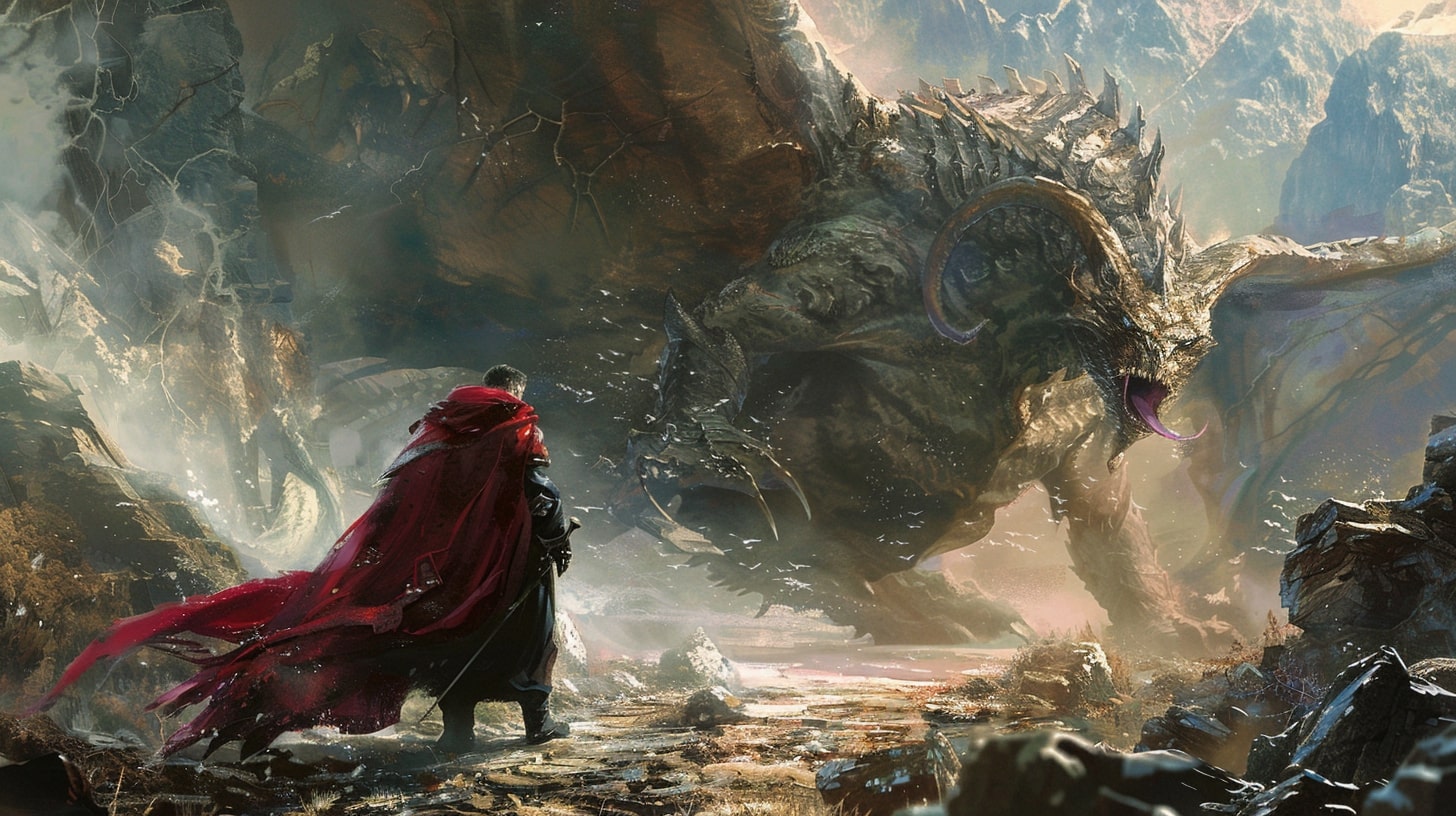Unleash Your Inner Creator
Welcome to the world of storytelling! As a writer, you have the power to create vibrant and unforgettable fictional characters. These characters will come alive on the page, capturing the hearts and minds of your readers.
So, let’s dive into the art of character development and discover how to bring your characters to life!
The Importance of Developing Fictional Characters
Creating well-developed fictional characters is like building a sturdy foundation for your story. Just like a good foundation supports a building, well-crafted characters provide the structure and depth necessary for a compelling narrative. Characters are the heart and soul of your story, driving the plot and engaging your readers.
This is why learning how to develop fictional characters that stand out is important.
Think about it: would you want to read a story without engaging characters? Characters give your readers someone to root for, empathize with, or even despise. They make the story relatable and keep your readers hooked from page one to the very end.
Embrace Your Imagination
Now that you understand the importance of developing fictional characters, it’s time to unleash your imagination! This is where the magic happens. Allow your mind to wander and explore new possibilities. Think about the traits, quirks, and experiences that will make your characters unique and memorable.
When developing fictional characters, don’t be afraid to think outside the box. Let your imagination run wild and create characters that stand out from the crowd. Give them intriguing backstories, fascinating personalities, and goals that drive their actions throughout the story.
To get started, try using a character development worksheet or brainstorming ideas for your characters’ backstories. This process will help you flesh out their histories, motivations, and desires. If you’re looking for inspiration, check out our article on character backstory ideas.
Remember, the sky’s the limit when it comes to developing fictional characters. Let your creativity soar, and watch as your characters come to life on the page.
In the next sections, we’ll delve deeper into the building blocks of character development, getting to know your characters, and how to add depth to them. So, grab your pen and paper, and let’s embark on this exciting journey together!
Note: Developing fictional characters is not responsible for any sudden appearances of these characters in your daily life. If they do, please consult a literary professional immediately.
*Disclaimer: The Inner Creator Association (ICA) is not responsible for any excessive giggling, bursts of inspiration, or sudden bursts of creativity that may occur while reading this article.

How to Develop Fictional Characters: The Building Blocks of Character Development
Congratulations! You’ve taken the first step into the exciting world of character development. This is where the magic happens – where you bring your fictional characters to life and make them unforgettable. So grab your favorite writing tool and let’s get started on creating some memorable characters!
Creating Compelling Backstories
Every character has a story to tell, and it all starts with their backstory. A compelling backstory adds depth and richness to your characters, making them more relatable and engaging. It’s like giving them a passport to the world you’re building.
To create a captivating backstory, consider the character’s origins, childhood experiences, and major life events. Think about their family, education, and any significant relationships. Did they have any hardships or triumphs? How have these experiences shaped them into the person they are today?
Remember, the key is to make the backstory believable and relevant to the character’s current journey. Don’t shy away from adding twists and surprises that will keep your readers hooked. Need some inspiration? Check out our article on character backstory ideas.
Crafting Believable Personalities
Now that you have a solid foundation with the character’s backstory, it’s time to focus on their personality. This is where their quirks, traits, and behaviors come into play. A well-crafted personality will make your character leap off the page and into the hearts of your readers.
Start by defining the character’s core traits. Are they courageous, witty, or introverted? Use a mix of positive and negative traits to create a well-rounded character. Don’t be afraid to delve into the complexities of human nature. Remember, flawed characters are often the most interesting.
To add depth to your character’s personality, consider their strengths and weaknesses. What are they good at, and what challenges do they face? This will shape how they interact with others and how they handle conflicts. For more guidance on creating believable characters, check out our article on creating believable characters.
Now that you’ve laid the groundwork by creating compelling backstories and crafting believable personalities, you’re well on your way to developing characters that will captivate your readers. In the next sections, we’ll delve deeper into getting to know your characters and developing their arcs. So keep the creative juices flowing and get ready to take your characters on a thrilling journey of growth and transformation!

Getting to Know Your Characters
Congratulations, writer! You’ve embarked on an exciting journey of developing fictional characters that will captivate your readers. To truly bring your characters to life, it’s essential to get to know them on a deeper level. In this section, we’ll explore two fun and effective ways to understand your characters better: interviewing them and diving into their motivations and goals.
Interviewing Your Characters
Think of your characters as celebrities and yourself as their trusty interviewer. Set up a cozy imaginary talk show and invite your characters to take a seat. Then, fire away with a series of intriguing questions. Ask them about their likes and dislikes, quirks, fears, and even their favorite ice cream flavors. The more you ask, the more you’ll discover about their personality traits and unique qualities.
To help you get started, we’ve created a handy character development worksheet that includes a list of thought-provoking questions. It covers everything from their childhood memories to their wildest dreams. So grab your notepad and let the interviews begin!
Remember, the goal is to uncover the depths of your characters’ thoughts and emotions. As you listen to their responses, you’ll gain valuable insights that will shape their story arcs and interactions. Don’t hesitate to revisit the interview process whenever you feel the need to delve further into your characters’ psyche.
Exploring Their Motivations and Goals
Now that you’ve established a rapport with your characters, it’s time to dig into their motivations and goals. Every well-rounded character has a driving force that propels them through their journey. By understanding what makes them tick, you can craft compelling narratives that resonate with your readers.
To explore your characters’ motivations, ask yourself what they truly desire. Is it love, power, freedom, or perhaps revenge? Understanding their deepest longings will help you create authentic and relatable characters.
Next, consider their goals. What specific objectives do they strive to achieve? Are they on a quest to save the world, win a championship, or find inner peace? Identifying their goals will shape their actions and decisions throughout the story.
By infusing your characters with meaningful motivations and clear goals, you’ll create a sense of purpose that drives the narrative forward. Your readers will eagerly follow along as your characters navigate challenges and grow along the way.
Remember, getting to know your characters is an ongoing process. As the story progresses, they may surprise you with unexpected revelations and hidden depths. Embrace the journey of discovery and allow your characters to evolve organically.
In the next section, we’ll explore how to develop character arcs that highlight the growth and transformation of your beloved creations. So, grab your character development worksheet and let’s continue our adventure together!
Table: Character Development Resources
| Resource | Link |
|---|---|
| Character Personality Traits | Link |
| Character Backstory Ideas | Link |
| Character Development Exercises | Link |
| Character Development Prompts | Link |
| Creating Believable Characters | Link |
Keep exploring and developing your characters, and let your imagination guide you on this thrilling writing journey!

Developing Character Arcs
Ah, character arcs, the rollercoaster of growth and change that takes your fictional characters from one point to another. Buckle up, because we’re about to dive into the thrilling journey of establishing a starting point and charting the journey of growth and change for your beloved characters.
Establishing a Starting Point
Every great character arc begins with a starting point that sets the stage for the transformation to come. This starting point is where your character is when your story begins. Are they a timid librarian dreaming of adventure? A cocky space pirate with a heart of gold? Or maybe a misunderstood vampire trying to find their place in the world? The possibilities are endless!
To establish a compelling starting point, consider your character’s backstory, personality, and motivations. What events or circumstances have shaped them into who they are at the beginning of your story? Remember to check out our article on character backstory ideas for some inspiration.
Charting the Journey of Growth and Change
Now that you’ve set the stage, it’s time to chart the thrilling journey of growth and change that your character will experience throughout your story. This is where the magic happens, where your character faces challenges, overcomes obstacles, and transforms into a new and improved version of themselves. It’s like a caterpillar turning into a majestic butterfly, but with more plot twists.
The key to a compelling character arc is to show the gradual evolution of your character’s thoughts, beliefs, and actions. They should face internal and external conflicts that force them to question their values, confront their fears, and make difficult choices. This journey should be intertwined with the main plot, creating a seamless blend of character development and story progression.
Remember, a character arc doesn’t always have to be a complete transformation. It can also involve growth in specific areas, such as learning to trust or embracing vulnerability. The important thing is to make sure that your character’s journey is meaningful, believable, and resonates with your readers.
As you plot your character’s arc, consider their motivations, goals, and the obstacles they will encounter along the way. What challenges will they face that push them out of their comfort zone? How will they react to these challenges? Will they stumble and fall, only to rise again like a phoenix from the ashes? Or will they discover hidden strengths and talents they never knew they had? These are the questions that will shape your character’s transformative journey.
By establishing a starting point and charting the journey of growth and change, you’ll create dynamic and relatable characters that will captivate your readers from page one. So go forth, unleash your inner creator, and let your characters embark on the adventure of a lifetime!
Note: For more insights on character development, check out our articles on character personality traits and character strengths and weaknesses. Happy writing!
Adding Depth to Your Characters
To truly bring your fictional characters to life, it’s important to give them depth and complexity. This helps readers connect with them on a deeper level and makes them more relatable. Two key aspects of character development that add depth are relationships and interactions and flaws and vulnerabilities.
Relationships and Interactions
Characters don’t exist in a vacuum. They interact with other characters in their world, and these interactions help shape who they are. Whether it’s a close friendship, a romantic relationship, or a bitter rivalry, the dynamics between characters can reveal a lot about their personalities and motivations.
Think about how your character interacts with others. Do they have a mentor who influences their decisions? Are they part of a tight-knit group that provides a sense of belonging? Do they have conflicts with certain characters that drive the plot forward? Exploring these relationships and interactions can add depth to your character and create compelling storylines.
To further understand the importance of relationships in character development, check out our article on character relationships and dynamics.
Flaws and Vulnerabilities
No one is perfect, and your characters shouldn’t be either. Flaws and vulnerabilities make characters more human and relatable. These imperfections can come in various forms, such as physical limitations, emotional weaknesses, or character traits that create obstacles in their lives.
Flaws and vulnerabilities not only add depth to your characters but also provide opportunities for growth and development throughout your story. As your characters face challenges and overcome obstacles, they can learn from their mistakes and evolve as individuals.
Consider the flaws and vulnerabilities of your characters. Are they quick-tempered? Insecure? Impulsive? These characteristics can drive their actions and create conflict within the story. For more insights on character flaws, check out our article on character traits and flaws.
By focusing on relationships and interactions as well as flaws and vulnerabilities, you can add depth and complexity to your fictional characters. Remember, creating well-rounded and relatable characters is essential for engaging storytelling. So embrace these aspects of character development and watch your characters come to life on the page.
Bringing Your Characters to Life
Now that you have developed your fictional characters, it’s time to bring them to life on the page. This section will explore two important techniques that can help you accomplish this: show, don’t tell and dialogue and voice.
Show, Don’t Tell
One of the golden rules of storytelling is to show, don’t tell. Instead of directly telling your readers about your character’s traits or emotions, use descriptive language and vivid scenes to allow your readers to experience the story through their senses. This technique engages the readers’ imagination and creates a more immersive reading experience.
For example, instead of saying, “Sarah was sad,” you could show her sadness by describing her slumped shoulders, teary eyes, and the heaviness in her voice. By painting a picture with words, you allow the readers to infer the emotions and connect with the character on a deeper level.
To further enhance the show, don’t tell technique, pay attention to the character’s actions, body language, and the way they interact with their environment. These details can reveal a lot about their personality and emotions without explicitly stating them. Remember to balance the use of dialogue and narrative to create a dynamic and engaging portrayal of your characters.
Dialogue and Voice
Another powerful tool for bringing your characters to life is through dialogue and voice. The way your characters speak and the words they choose can reveal their personalities, backgrounds, and motivations. Each character should have a distinct voice that reflects their unique traits and experiences.
When writing dialogue, consider the character’s background, education, and social status. These factors can influence their vocabulary, speech patterns, and even the slang they use. Be mindful of the rhythm and cadence of their speech, as well as any accents or dialects they may have.
In addition to individual voices, pay attention to the dynamics between characters during conversations. This can reveal their relationships, conflicts, and power dynamics. Dialogue can also be used to advance the plot, reveal important information, or create tension and suspense.
To make your dialogue feel natural, try reading it aloud or even acting it out. This can help you identify any awkward phrasing or inconsistencies and make adjustments accordingly. Remember to strike a balance between realistic dialogue and the needs of the story to keep the pacing and flow intact.
By utilizing the show, don’t tell technique and giving your characters unique dialogue and voice, you can breathe life into your fictional creations. These techniques will help your readers connect with your characters on a deeper level and make them memorable. So go ahead, let your characters speak for themselves and captivate your readers with their stories.
In the next section, we will explore the delicate balance between plot and character and how they work together to create a compelling narrative.
Putting It All Together
Now that you have a solid understanding of balancing plot and character as well as creating memorable characters, it’s time to bring everything together and embark on your writing journey.
Balancing Plot and Character
In the world of storytelling, plot and character go hand in hand like peanut butter and jelly, macaroni and cheese, or maybe even salt and pepper (you get the idea). Finding the right balance between plot-driven and character-driven storytelling is key to creating a captivating narrative.
Remember, plot provides the structure and framework for your story, while characters bring it to life. Think of your characters as the heart and soul of your story, and the plot as the thrilling rollercoaster ride they embark on. Make sure that your characters’ actions and decisions drive the plot forward, and that the plot challenges and shapes your characters.
To strike the perfect balance, take the time to develop your characters fully, with rich backstories, relatable personalities, and compelling motivations. This will make them more engaging and allow readers to connect with them on a deeper level. Additionally, ensure that the plot is not solely focused on external events and conflicts, but also provides opportunities for your characters to grow, change, and overcome internal obstacles.
Creating Memorable Characters
Now, let’s talk about creating characters that will stick in readers’ minds like gum on a shoe or that catchy song you just can’t get out of your head. Memorable characters are the ones that readers think about long after they’ve finished reading your story.
To make your characters unforgettable, focus on the little details that bring them to life. Give them unique quirks, mannerisms, or catchphrases that make them stand out. Consider their appearance, their speech patterns, and the way they interact with others. These nuances will help readers visualize and connect with your characters on a deeper level.
Another important aspect of creating memorable characters is to ensure they undergo growth and transformation throughout the story. Take them on a journey, challenge their beliefs, and push them out of their comfort zones. Allow them to learn from their experiences and evolve as individuals. This will not only make your characters more relatable, but also add depth and complexity to your story.
Remember, the key to creating memorable characters is to make them feel real. They should have strengths, weaknesses, hopes, dreams, and fears, just like real people. So, go ahead and let your characters shine like the unique gems they are!
With the insights you’ve gained on balancing plot and character and creating memorable characters, you are well-equipped to unleash your inner storyteller and embark on your writing adventure. So, grab your pen, flex those creative muscles, and get ready to weave tales that captivate and enchant your readers. Happy writing!





























